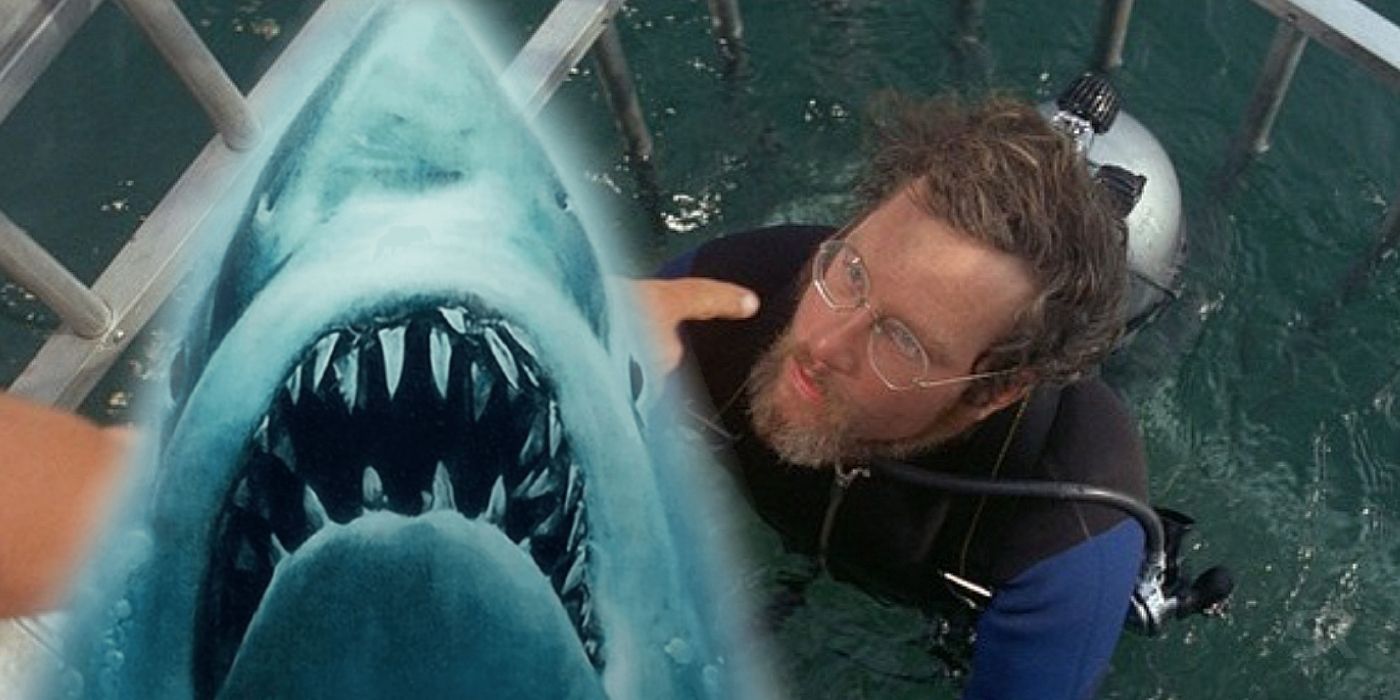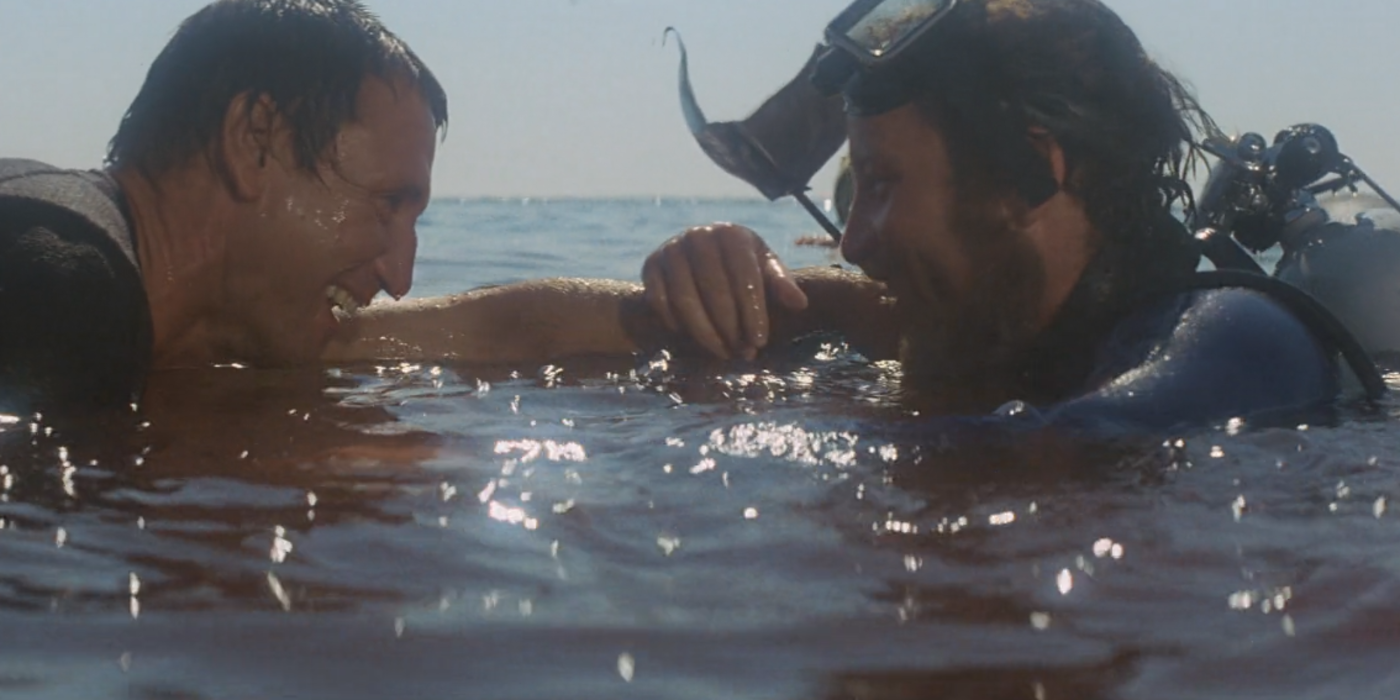Matt Hooper's cage diving scene was one of the most memorable sequences in Jaws, but the stunt took a lot of tricks to pull off without CGI. Richard Dreyfuss portrayed the no-nonsense marine biologist in director Steven Spielberg's breakout hit. Serving as the first real summer blockbuster in 1975, Jaws went on to spawn three sequels. While the franchise isn't known for its stellar special effects, certain filming techniques amped up the terror when it came to the depiction of the man-eating shark.
Set in the town of Amity Island, Jaws was filmed on and around the island of Martha's Vineyard, Massachusetts. From the start, production ran into several major issues seeing as it commenced without a complete script, a full cast, and a plan for the shark. The movie centered on a popular vacation spot that was being terrorized by a large shark before a trio of men, including Chief Martin Brody (Roy Scheider), attempted to hunt down the creature. Seeing as a shark was a major focus of the movie, Spielberg and his team decided to build three prop mechanical sharks. Filming a major portion of the movie also unearthed some difficulties, which caused the project to go well over the budget.
Toward the end of Jaws, Brody, Hooper, and expert shark hunter Quint (Robert Shaw) have one last major faceoff with the shark while onboard the Orca. The climactic sequence featured Hooper volunteering to enter a shark-proof cage to lethally inject the creature from beneath the surface. The shark, of course, attacked Hooper before the man accidentally let go of the spear. Hooper managed to escape the cage before the shark broke in, thrashing around in a fit of rage. While the character's fate was initially unknown, he later resurfaced to rejoin fellow survivor Brody. According to production details, a shrunken cage was used for the filming of Hooper's diving scene. His stunt double was also played by a 4-foot-9 former jockey to make the shark look even more terrifying. This sequence also had significant effects on Spielberg's vision for the movie.
How The Cage Stunt Changed Jaws For The Better
To create the cage diving moment in Jaws, a second filming unit was sent to acquire footage in South Australia. During the shoot, a great white shark reportedly attacked the crew's boat and the diving cage in the water. This event actually changed Spielberg's plans for Jaws. Based on the footage of the shark attack, the director decided to have Hooper escape from the cage, rather than have the character die during the sequence. Due to this decision, Hooper's fate was changed from Peter Benchley's book, on which the movie was based, and more shark footage from South Australia was used.
Looking back, it's quite easy to separate the real shark footage from the prop techniques used by the production team in Jaws. That said, Hooper's cage-diving stunt still holds up since it was one of the most heart-pounding sequences in the movie. Hooper's fear was palpable at that moment in which he was attacked by the great white, and that extreme terror added to the realism of the turn of events. Whereas modern-day shark movies tend to rely on CGI, Jaws' tricks with miniature cages, short stunt people, and real footage was a tricky, but effective move.


